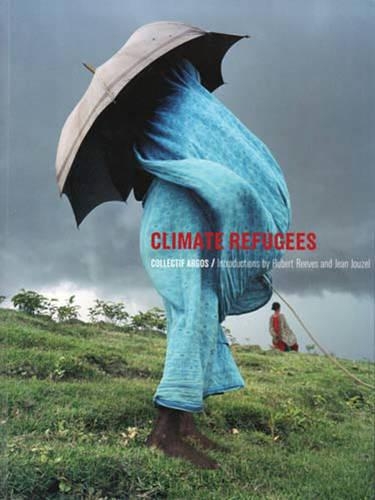
Climate Refugees
(Paperback)
Publishing Details
Climate Refugees
By (Author) Collectif Argos
Introduction by Hubert Reeves
Preface by Jean Jouzel
MIT Press Ltd
MIT Press
9th April 2010
United States
Classifications
General
Non Fiction
Photojournalism and documentary photography
363.73874
Physical Properties
Paperback
350
Width 178mm, Height 241mm, Spine 23mm
953g
Description
Heartbreaking stories and pictures documenting the phenomenon of populations displaced by climate change-homes, neighborhoods, livelihoods, and cultures lost."Our job is to tell stories we have heard and to bear witness to what we have seen. The science was already there when we started in 2004, but we wanted to emphasize the human dimension, especially for those most vulnerable." -Guy-Pierre Chomette, Collectif Argos We have all seen photographs of neighborhoods wrecked and abandoned after a hurricane, of dry, cracked terrain that was once fertile farmland, of islands wiped out by a tsunami. But what happens to the people who live in these areas According to the United Nations, some 150 million people will become climate refugees by 2050. The journalists and photographers of Collectif Argos have spent four years seeking out the first wave of people displaced by the consequences of climate change. Using the massive 2,500-page report of the Intergovernmental Panel on Climate Change (IPCC) as their guide, these photographers and writers pinpointed nine locales around the world in which global warming has had a measureable impact. In Climate Refugees, they take us to these places-from the dust bowl that was once Lake Chad to the melting permafrost in Alaska-offering a first-hand look in words and photographs at the devastating effects of rising global temperatures on the daily lives of ordinary people. Climate Refugees shows us damage wrought to homes and livelihoods by rapid warming near the Arctic; rising sea levels that threaten the island nations of Tuvulu, the Maldives, and Halligen; farmers displaced by the desert's advance in Chad and China; floods that wash away life in Bangladesh; and Hurricane Katrina evacuees in shelters far away from their New Orleans neighborhoods. Added to the devastating environmental effect of climate change is the immeasurable and irretrievable loss of ethnic and cultural diversity that occurs when vulnerable local cultures disperse. It is this often forgotten and tragic consequence of global warming that Collectif Argos painstakingly documents. Collectif Argos Guy-Pierre Chomette Guillaume Collanges Hel ne David Jer mine Derigny Cedric Faimali Donatien Garnier Eleonore Henry de Frahan Aude Raux Laurent Weyl Jacques Windenberger
Reviews
Climate Refugees stands out among the many publications on climate change and migration in recent years. With vivid photographs and well-written narratives, it presents a striking picture of human displacement and migration resulting from climate-related disasters.
Hua QinPeople of the Arctic, the Sundarbans, the Maldives, the Longbaoshan, the Louisiana Gulf Coast, Tuvalu, Lake Chad, and the Himalayas comprise the nine communities Collectif Argos visited with pen and camera to produce, in 2007, the sad and haunting Climate Refugees, recently translated and published in English. While the global pool of climate literature is crowded and it's becoming increasingly difficult to advance the climate story, this book does so by documenting firsthand the day-to-day experience of people being challenged by weather conditions so extreme, they are simply forced to quit, pull up roots, and move to higher ground. Their remote and rugged communities, all struggling to adapt to chaos, are canaries in the global mine of climate change. And their stories are moral barometers for the rest of the world.
Mark Dowie, OrionAuthor Bio
Created in 2001, Collectif Argos brings together ten journalists-photographers and writers-who share a commitment to documenting the changes taking place in the world-ecological, economic, political, and cultural, subtle or spectacular, global or local. Hubert Reeves was born in Montreal and educated in Canada and the United States. Since 1966 he has been director of research at France's Centre National de la Recherche Scientifique while continuing research at the Centre d'Etudes Nucleaires de Saclay.
